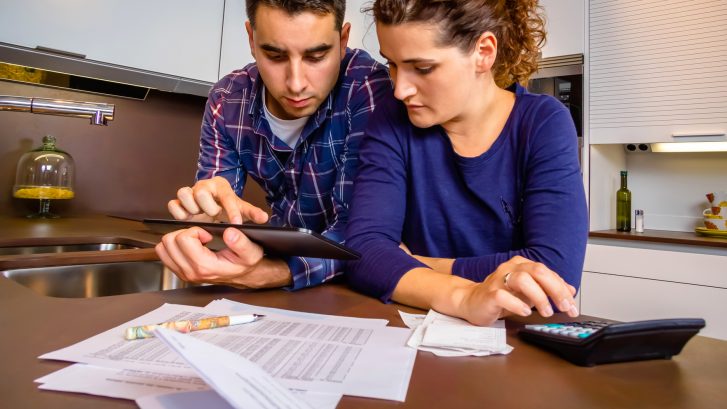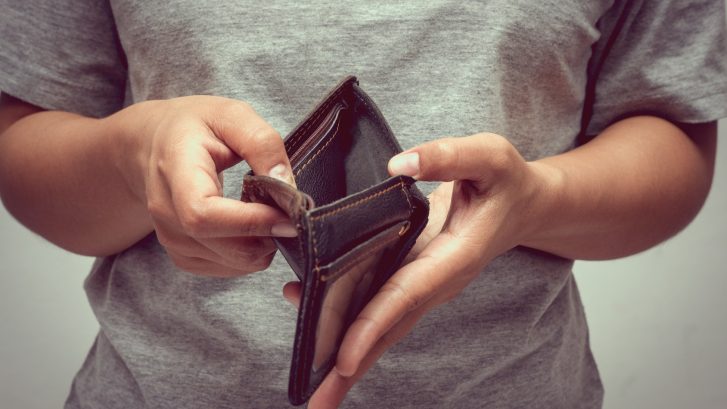Being in debt sucks, plain and simple. Australia alone has a substantially shocking margin of household debt at nearly 125.2%.
Your credit, financial opportunities, and general financial standing take a big hit when you fall into debt – and it is very easy to do.
But being in debt doesn’t have to define you, and you can actually get out of debt pretty quickly.
We put together a guide to getting out of debt quickly and properly as well as how to manage your debt without being completely broke.
Ready for some handy knowledge and to get in control of your debt? Check out our awesome guide!
Being In Debt And How To Get Control
This guide can help you prevent, fix, and manage your debt.
Prevention Is Key
If you need cash quickly and are considering payday loans or credit cards, consider some alternatives before you potential get in debt.
There are a ton of things you can do to get cash quickly without the need for a lender:
Sell your stuff on Craigslist, eBay, or DePop. Look through your closet, garage, attic, and other places in your home for the junk you never use anymore and purge your life of garbage while simultaneously making money.
Pick up a side gig like driving for Uber, freelance writing or blogging, or housekeeping.
Use your savings. The key to this is to replenish your savings as quickly as you can after taking out the money. Saving is hard, but there are
Saving is hard, but there are a ton of resources out there that are ready to help you learn how to save.
Before you try to get approved for a loan or credit card, try these steps first.
Recognize When Things Are Getting Bad
It can often be very clear when your debt has spiraled out of control, but other times it can sneak up on you – and other people will notice before you do.
When credit card or loan debt gets to be overwhelming, it is easy to go straight to denial.
Do you ignore calls from unknown numbers, ignore your bills, and avoid conversations about finances with your partner or family? You might be in denial about the gravity of your debt.
Ignoring debt may seem to work for a while, but it isn’t going anywhere. Your accounts will rack up interest and late payment fees.
You need to snap out of that denial in order to give your debt attention it needs to disappear.
Just as well, if you have a super vague payoff deadline, you may be setting yourself up for disaster too.
Saying you will pay off your debts “eventually” is on any calendar. Make a solid but reasonable deadline for your debts to be paid off and work towards that goal.
Take Action With Little Steps First
Get control first and foremost by looking at all of your balance statements. Make a list of each individual debt you have plus their due dates, minimum payments, and their individual current interest rates.
Pay all of those minimum payments now.
Organize all of your debts starting with the one with the biggest interest rate. With any spare money you might have, try to pay addition money towards your highest interest debt.
As you earn income, reserve a significant amount of your paycheck to paying more and more of that highest interest loan off until the balance goes to zero.
Then, move on to the next ones. This will take a lot of time depending on how many debts you have, but it will work.
In addition to keeping track of your debts, also keep track of your incomes and expenses. Deduct how much money you have to spare monthly and dedicate that money to paying off your debts.
Balance Transfers
Credit card balance transfers are credit accounts with 0% APRs (usually introductory) that are used to reduce the burden of other credit card interest rates. With the balance from this low-interest card, you can pay off your more aggressive debts and combine them into one low-interest account.
Balance transfers can absolutely be helpful. However, it is easy to get stuck in the cycle of using balance transfer after balance transfer to avoid the later higher APR.
This also can apply to payday loans. Payday loans can be a fantastic solution to very short-term issues, but one can get stuck in the cycle of rollovers and high-interest rates if they are not careful.
Remember that moving a balance isn’t the same as getting rid of it. Use this formula for balance transfer card repayment:
Total balance transfer balance / # of months until the 0% introductory APR expires
The result of this calculation is your new monthly payment. If you stick to these payments, you’ll be debt free in no time without having to pay an aggressive APR on top of the debt.
Save, Save, Save!
Saving your money is how you will be able to pay off that debt. There are many ways to save money out there, and you should do your best to making a savings plan that works for you.
On top of saving money to use for debt repayments, try to save additional money on top of that to bulk up your savings account.
It doesn’t have to be a lot of money at all. Start with a couple dollars here and there, then gradually add more money to your savings account and do not spend that money on anything.
The security net of having a savings count and nurturing it until it can hold a substantial amount of money will make you feel safer and proud of yourself as well. When an emergency comes around, you will be both debt-free and prepared.
When an emergency comes around, you will be both debt-free and prepared. No need for a loan or a credit card.
Get Out Of Debt The Right Way
Was our guide to being in debt and getting out quickly and properly helpful to you?
Tell us your thoughts, along with your favorite tips for being in debt and getting out quickly, in the comments below!


